Small enrollment, big impact: PSD mountain schools are hubs of three communities
David Maynard has eight students in his class this year at Stove Prairie Elementary School — five fourth graders and three fifth graders.
Some years, though, he’s had as many as 22 in his combined class at the oldest continuously operating school in Poudre School District.
Stove Prairie Elementary, at the top of Rist Canyon along Stove Prairie Road in the foothills 20 miles northwest of Fort Collins, opened in 1896 to serve the children of two homesteading families in the area, according to the Fort Collins History Connection, an online collaboration of the Fort Collins Museum of Discovery and Poudre River Public Library District.
Additions have been made to the original one-room schoolhouse over the years. But it still serves as the only public school in a large and mountainous region that stretches across paved and dirt roads between Masonville and the Poudre Canyon.
“It’s a hub for the community,” said Maynard, a Poudre Canyon resident now in his 12th year teaching Stove Prairie’s fourth and fifth graders. “It brings people together, and I think nothing highlighted that more than during the (2012) High Park Fire, just how everybody was able to pull together, and the hub of that was Stove Prairie.”
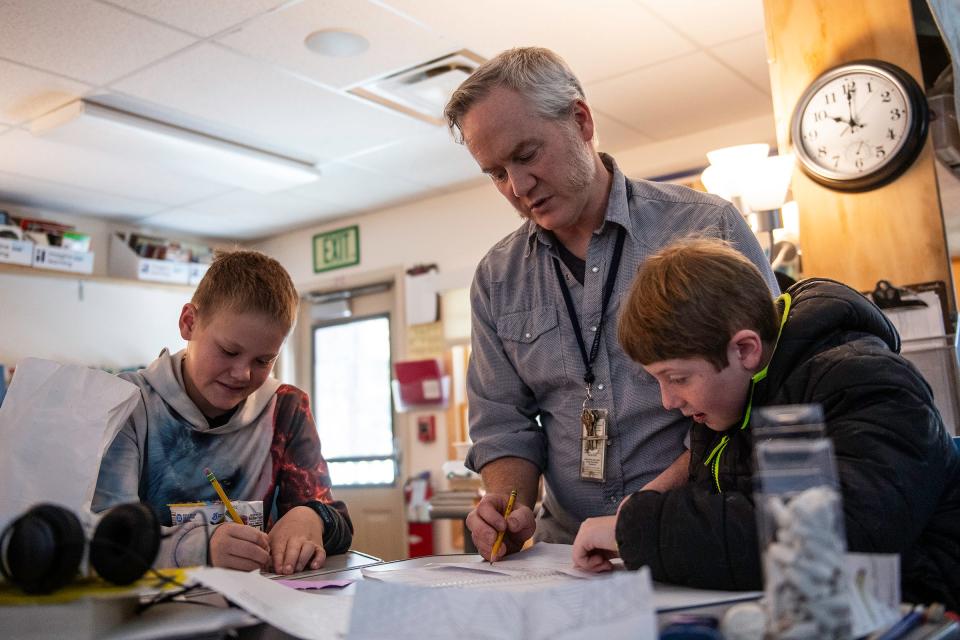
Stove Prairie Elementary had 45 students in 2012-13, according to the Colorado Department of Education’s annual enrollment count, but has just 25 students this year in kindergarten through fifth grade. There are four students in Rheo Zawardzki’s kindergarten and first grade class, 13 in Mallory Firmery’s second and third grade class and eight in Maynard’s fourth and fifth grade class.
Enrollment is only slightly higher at the other mountain schools still operating in the Poudre School District, Livermore Elementary with 38 students in grades K-5 and Red Feather Elementary with 32, according to the district’s preliminary October enrollment count. Preschool programs draw a few additional students.
Although most of its schools are in Fort Collins, PSD's boundaries cover 1,800 square miles, from the Continental Divide to the west and the Larimer-Weld County line to the east, to the Wyoming border to the north and south from a few miles north of Masonville along a line stretching into northwest Windsor and northeast Loveland.
Each of the mountain schools has a designated secretary, early childhood education teacher, instructional paraprofessional and custodian — with one individual filling two or more of those roles at each of the three schools in different combinations. Lea Mikkelsen, for instance, serves as the secretary, librarian and health technician at Red Feather. The custodian at Stove Prairie is also the preschool teacher, and the custodian at Livermore doubles as a paraprofessional.
The schools share a principal, counselor, office manager, nurse, speech and language specialist, mental health specialist, tutor, combined physical education and music teacher, and an art teacher. Kitchens were added to each of the schools in recent years, and students can receive both breakfast and lunch. Livermore and Stove Prairie have their own nutritionists who prepare fresh meals, while community volunteers prepare and serve food each day to students at Red Feather, said Mikkelsen, who lives in the area.
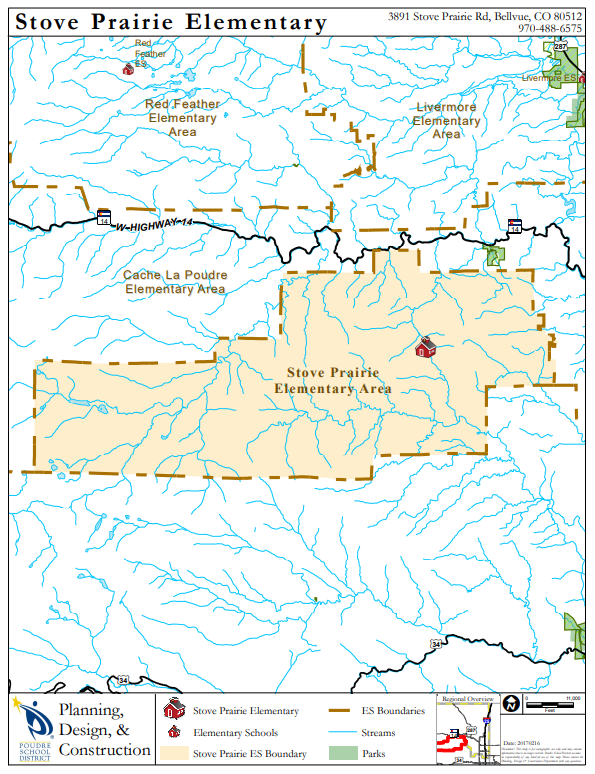
Per-pupil spending for the mountain schools is $13,686 this school year, the highest in PSD and more than double that received by 21 of the district’s other 28 elementary schools, according to data shared by the district on its long-range planning website.
Although PSD Superintendent Brian Kingsley noted the mountain schools are unique because of their geographic isolation, all three could still find themselves in the crosshairs as PSD's leadership and governing board examine potential school consolidations and closures in response to declining enrollment. PSD closed its Poudre Canyon and Gleneyre schools in the 1980s and '90s because of declining enrollment, leaving a mountain area in northwestern Larimer County once served by as many as 15 public elementary schools with just the current three.
“When you start talking about consolidation, everyone gets nervous because we’re so small,” said Tom Schachet, now in his seventh year as principal of PSD’s mountain schools. “So, that’s always in the community’s mind as you start to talk about that. I do believe we serve a very unique clientele and serve this district in a way that can’t be measured by numbers just based on true community involvement. Having schools that are able to serve these communities is essential for these communities.”
Mountain schools are 'the heart of those communities'
There's precedent for leaving Colorado's mountain schools out of district consolidation plans. Boulder Valley School District “made the conscious decision to not include the mountain schools in our long-range planning discussions, just because the context is dramatically different than that of a school within the city of Boulder or any of our other municipalities,” said Robbyn Fernandez, an assistant superintendent.
So, Gold Hill Elementary, which had 15 students last year, and Jamestown Elementary, which had 17, were left intact when the school district made the controversial decision 20 years ago to close Mapleton and Washington elementaries in Boulder, she said, and have been left out of current discussions to address declining enrollment.
Those schools, each with one class for kindergartners through second graders and another for grades 3-5, “are the heart of those communities,” she said.
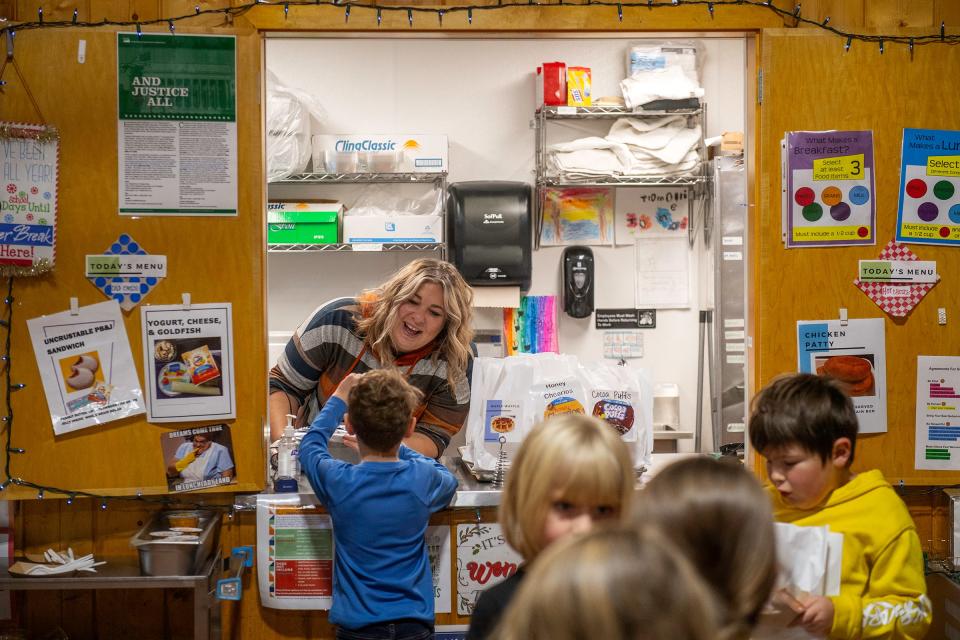
That’s even more true of PSD’s Stove Prairie Elementary, which serves a disjointed area of mountain residents who have nowhere else to gather. There’s no post office, library, restaurant or general store, and next-door neighbors might live 3 or 4 miles away.
Parents often arrive early or stay late so their kids can play with friends on the playground while they chat with one another. Two parents interviewed for this story said they met their best friends through those casual conversations.
Sarah Scholz has lived in the mountains near Stove Prairie Elementary School for most of her life, attending sixth grade there in 1995 before PSD moved its sixth graders from elementary schools to middle schools. Now, she brings her daughter, a first grader, there every day from her home about 1 1/2 miles away.
Sarah Rowan, president of the school’s parent-teacher organization, drives about 25 minutes each way from her home south of Masonville, in the neighboring Thompson School District, to bring her second grader to Stove Prairie. Thompson School District doesn’t provide bus service to her area, she said, and the drive to her home’s assigned elementary school, Big Thompson, would take even longer. As a result, she said, many of her neighbors choose to homeschool their kids.
Rowan and Sholz want their children to go to school with other “mountain kids” who better understand each other. Both also enjoy the small class sizes that allow their children to receive more individual attention from a teacher they’ll have for two years at a time.
“I think it has a lot of benefits for the children to maintain that connection with their teacher over multiple years for learning purposes,” Rowan said.
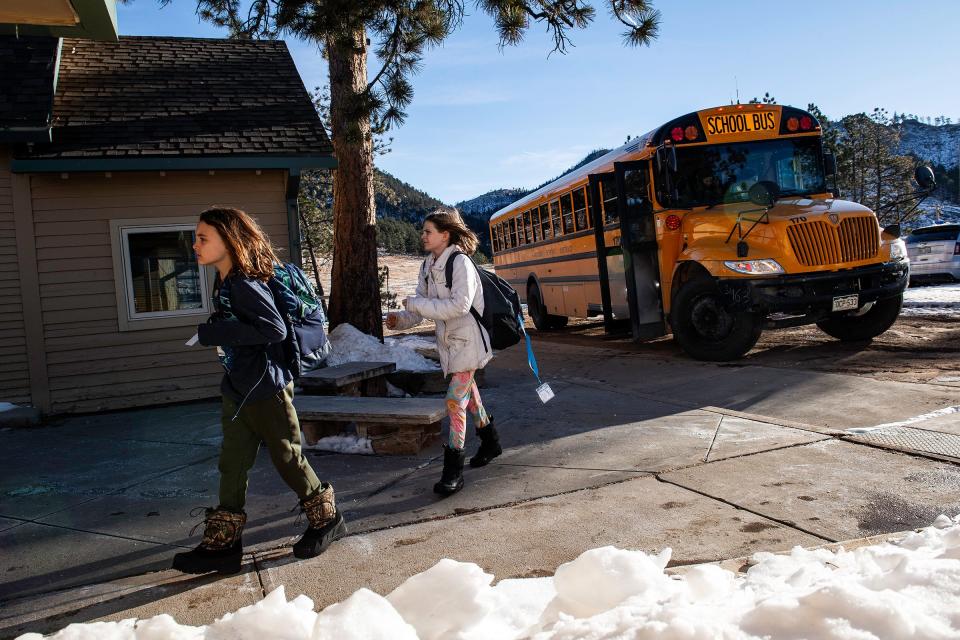
Studies have shown that to be true, Maynard said. Teaching two grades at once, and covering the required curriculum in each, is a challenge at first, he said. But once you figure out how, there are some huge advantages. He can let fourth graders who have the ability do fifth-grade math. Or allow a fifth grader struggling a bit with reading to work with the fourth graders to catch up.
“We have a little more flexibility to meet all the students’ needs with the sizes of our classes and things like that,” Maynard said.
They’re also able to work more closely with families to ensure students are receiving the support at home they need to be successful in the classroom. Parents in the mountain communities tend to be more involved in their children’s education than those in larger communities along Colorado's Front Range, said the teachers who previously worked at schools in other cities. Those who drive their children to school often come inside before classes start or at the end of the day for a quick chat with their teacher or other staff members.
'Deeper connections' and community involvement are highlights for teachers
Red Feather Lakes has had its own school since 1896, according to the Fort Collins History Connection, and was still operating as a one-room school as recently as 1978. The current building, on Red Feather Lakes Road a mile beyond the turnoff to Red Feather Lakes Village, opened in 1986, according to a dedication plaque inside the school.
Jacob Erbel, the fourth- and fifth-grade teacher at Red Feather, previously taught at schools in Fort Collins and Greeley. Parents were often too busy with their own jobs to find time to discuss their children’s education, he said, “which I 100% get.”
Teaching at a mountain school, he said, is a “complete 180.” With just 16 students in his class this year, equally divided between the two grades, he’s able to “really make deeper connections with the kids” and provide more 1-on-1 instruction than he could at other schools. Dedicated volunteers, like retired Denver-area teacher Mike Pickett at Red Feather, help, too, by pulling aside small groups within his class and others to provide additional instruction to those who are either well ahead or well behind their peers in a particular subject area.
“Up here, the small community’s awesome and super involved,” said Erbel, who commutes from Fort Collins. “The school is definitely part of the community up here.”
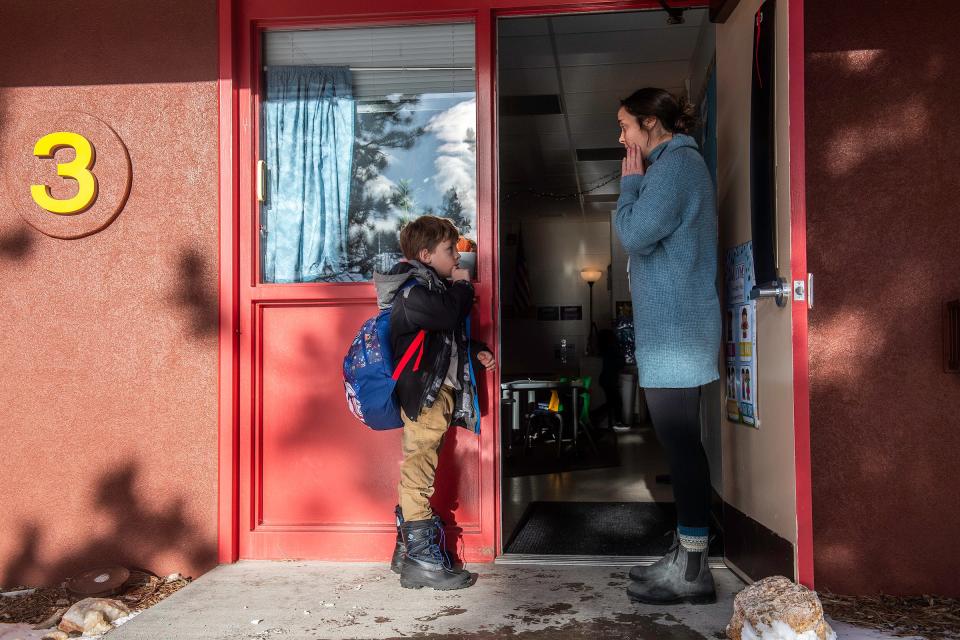
Discipline is less of an issue, too, Schachet and the mountain schools’ teachers said, because the entire community tends to hear about everything that takes place in school each day. Anonymity doesn’t exist in such small communities.
“Everybody knows everybody,” Schachet said.
That tightknit feel of the mountain schools has its drawbacks, too. Sarah Kress, the counselor who splits her time among all three, said she sometimes runs into issues where students from different families interact with one another as if they were siblings.
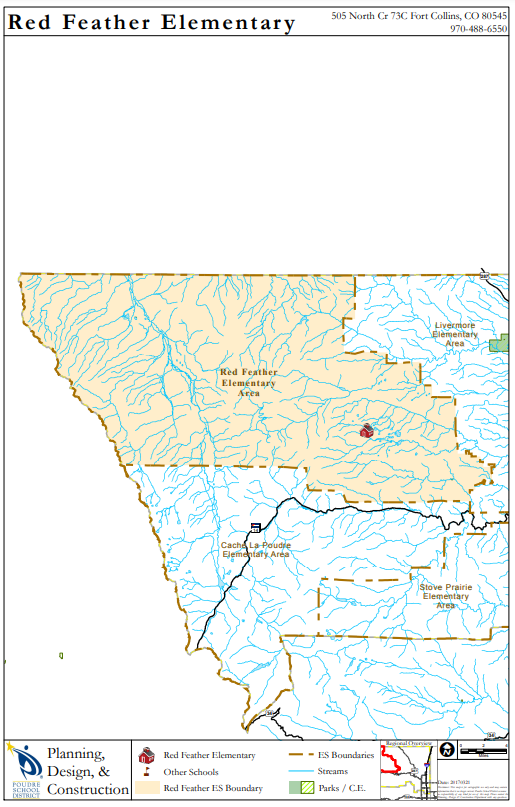
“The kids have all grown up with each other, they’re in the same class for two years together, and they all know each other’s siblings and cousins and families,” Kress said. “It adds a unique set of challenges. Just yesterday, we were talking about how kids fight like brothers and sisters. There might be a fifth grader who has known a kindergartner since they were born that are not related, and they think they can kind of give them the rules of the playground and kind of be in charge of them and things like that.”
Playground interactions like that couldn’t happen at most elementary schools in PSD, where children in different grades have recess at different times. At the mountain schools, the kids are all out there together.
“They have to figure out how they can play together, how to play games together,” said John Higgins, a longtime Livermore resident who drove buses on PSD’s mountain routes for more than 20 years. “The mountain schools kids know if they’re going to play a game of baseball, the kindergartners have to be part of the team, and the city schools’ kids don’t have to develop that ability. The skills that are developed in a small, multigrade school are much more complex than to some degree can be put into words.”
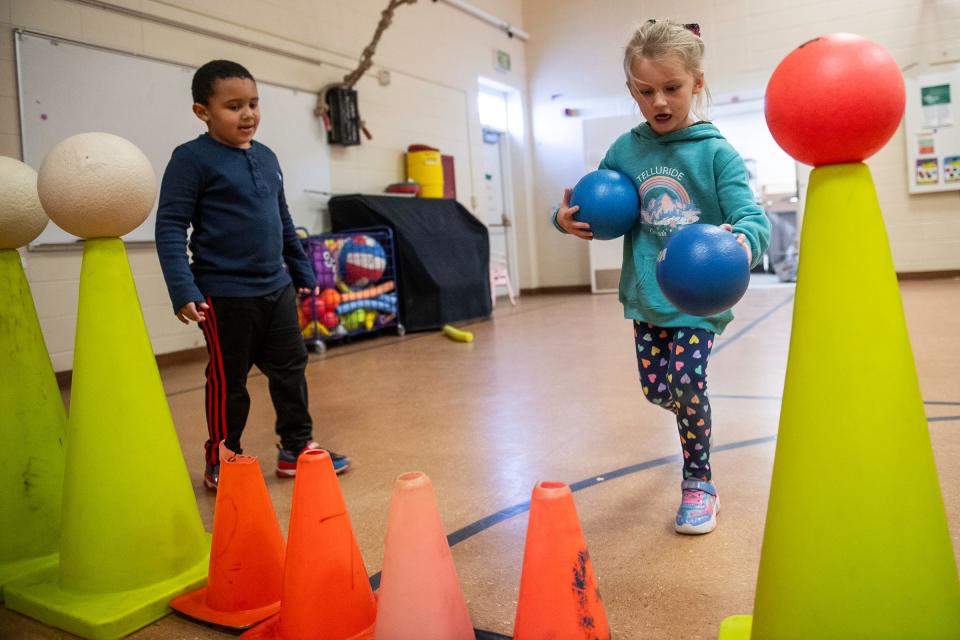
Higgins’ wife, Linda, used to teach at PSD schools, including two K-8 mountain schools that were closed because of declining enrollment in the 1980s and ‘90s — Gleneyre, a school 110 miles northwest of Fort Collins, near the Wyoming border, that taught just three students in 1984, according to previous Coloradoan reporting; and Poudre Canyon, 33 miles west of U.S. Highway 287 near Rustic.
Higgins' children attended Livermore Elementary, and they have a grandchild in preschool there now.
As communities change, schools remain at the center
Livermore has had a school since 1874, when classes were held in a dugout with a sod roof, dirt floor and single window, according to the Fort Collins History Connection. The current two-story, brick building was built in 1952, eight years before the Livermore School District and 22 others were consolidated and reorganized into the Poudre School District.
“It used to be a ranching community school,” said Jen Vaad, the office manager for PSD’s mountain schools who works out of Livermore Elementary. “Now, it’s more of a bedroom community and a lot of people drive into town or up into Wyoming for work. There aren’t as many working ranches, and some of the working ranchers that are still here either don’t have children yet or their children are all grown up. … But I feel like most of the people who live up here still have a cow or two or horse or two, so the kids kind of get to enjoy that out-of-town life and learning about some of that stuff.”
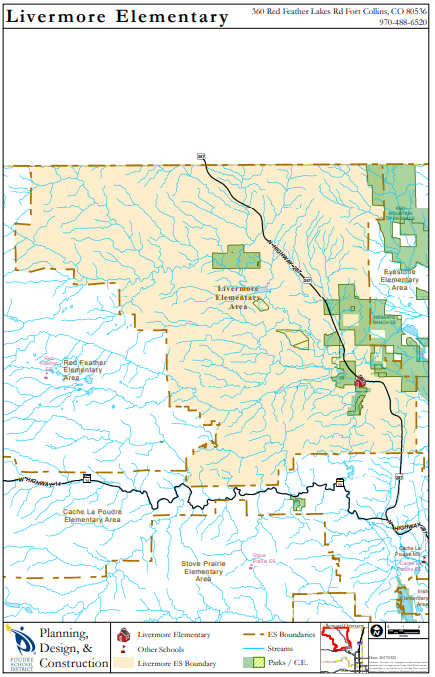
Vaad and her husband are ranchers, raising cattle on their land several miles north of Livermore. Their two boys, now attending Poudre High School in Fort Collins, both went to Livermore Elementary, where she has worked for the past 10 years.
The ranchers might be disappearing, she said, but the mentality they brought to the community and its school remain.
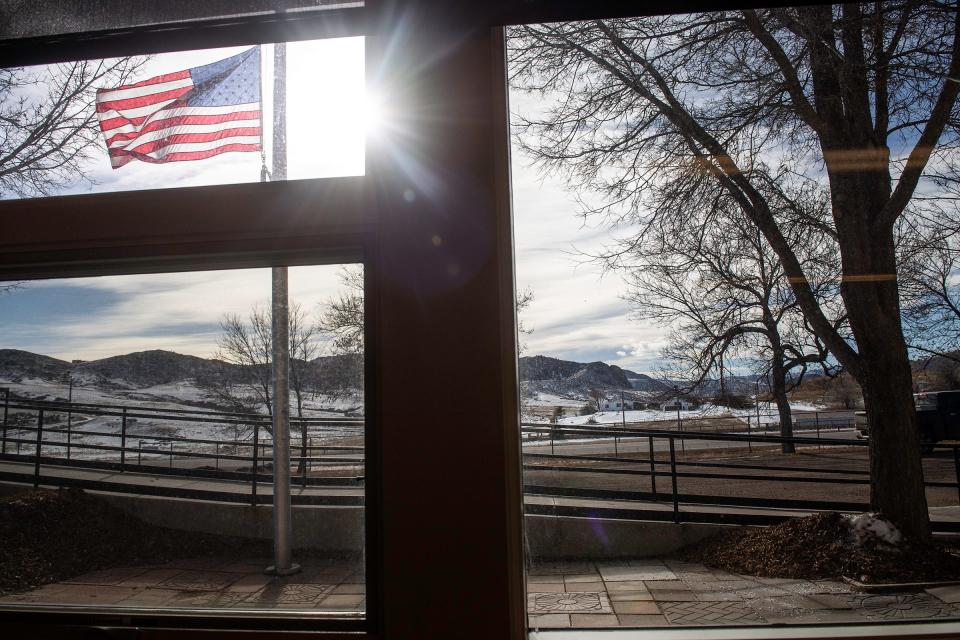
Despite their similarities, each of the mountain schools and their communities have their own distinct personalities, Kress said. Stove Prairie is for the “river kids” living in canyons (Rist, Buckhorn and Poudre). Red Feather is the “remote school,” with some kids living in primitive cabins and even recreational vehicles with limited or no amenities. And Livermore has the “ranch kids.”
They really are different from one another, she said.
And quite a bit different than the kids attending elementary schools in Fort Collins.
“There’s still a certain amount of personality and climate and attitude about it; that you want to live out here,” Linda Higgins said. “You’ve got to not be afraid of the dark. It takes a certain personality to desire it and to seek it. … The opportunities the mountain schools’ kids have, they cannot be duplicated anywhere else.”
Reporter Kelly Lyell covers education, breaking news, some sports and other topics of interest for the Coloradoan. Contact him at kellylyell@coloradoan.com, twitter.com/KellyLyell or facebook.com/KellyLyell.news.
This article originally appeared on Fort Collins Coloradoan: Poudre School District mountain schools hub rugged Colorado communities

